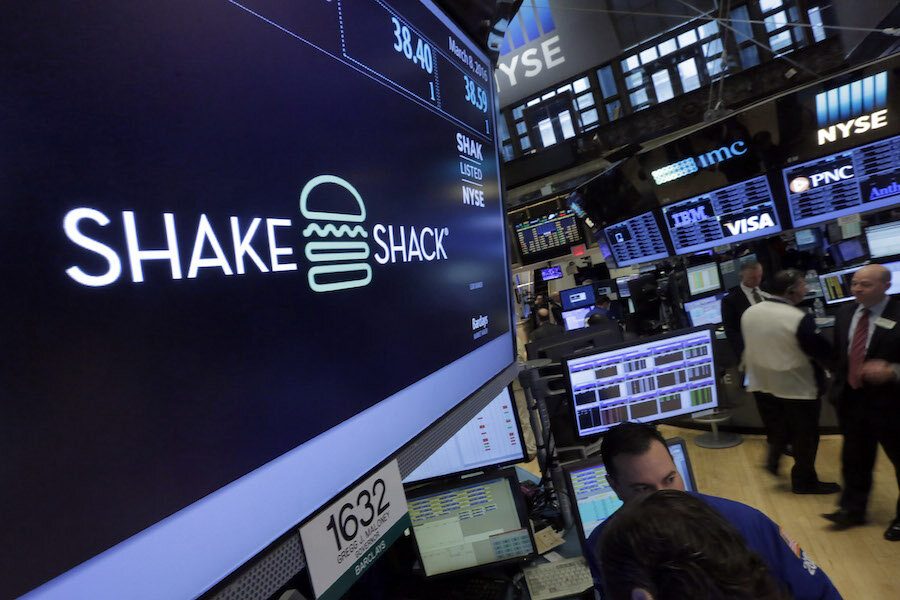Shake Shack's incredible year ends with a thud
Loading...
Every company should be so fortunate as to have a year like the one Shake Shack had in 2015, its first year as a publicly traded brand. For many other companies, the 3% or so of price increase they enjoyed in Q4 served to compensate for lower customer traffic. But Shake Shack’s 11% same-store sales increase came from not just from 3% in price but also a 6.2% increase in traffic and a 1.8% gain from menu mix.
For fiscal year 2015, it reported that same-store sales rose 13.3%; overall sales rose 63.5%. Restaurants it opens this year are projected to have initial annual sales of $3.3 million and profit margins of 22%.
But Shake Shack execs aren’t letting the crazy-good numbers go to their heads. CEO Randy Garutti said the company expects 2016 same-store sales will be back on Earth at 2.5% to 3%. Lapping the 2015 increase will be difficult, even with the addition in January of the popular Chicken Shack sandwich, which Garutti stopped just short of saying will definitely be a permanent addition. It’s among the top 5 sellers in almost every Shake Shack, but, still, Garutti wouldn’t make permanence official.
The chain continues to offer local special burgers such as the recent Lockhart Link (shown below) sold exclusively at its two Austin, Texas, stores. It’s a classic Shack cheeseburger topped with pickles, ShackSauce and a griddled jalapeño cheese sausage link from local Kreuz Market.
Trying to keep the menu tight, Shake Shack made room for the Chicken Shack by temporarily eliminating the burger LTO. The Roadside Shack was the most recent and sold well, even priced at $6.19, Garutti said. A new LTO burger is promised for the second half of this year. He said the company continues to believe that enough consumers “are more than willing to pay a little more for that experience that is Shake Shack” to keep it out of the discount fray that it doesn’t want to enter.
Shake Shack opened 21 restaurants in 2015—13 domestic and eight international licensed stores—expanding its total by 33% to 84 at year end. In the next two weeks it will add its first stores in the Phoenix market and Los Angeles, with inaugural Dallas and Minneapolis openings to follow. A total of 13 new domestic stores are planned this year, including one in Las Vegas’ T-Mobile Arena. Garutti said the strategy is for one-third of new stores to be in new markets with two-thirds filling out existing markets.
Additionally, as of January, Garutti said the company has increased starting pay for employees to $10.50 to $12 (up from $9.50 to $11). Team leaders make $12 to $15. Investing in talent makes sense for Shake Shack as it grows, he said.








